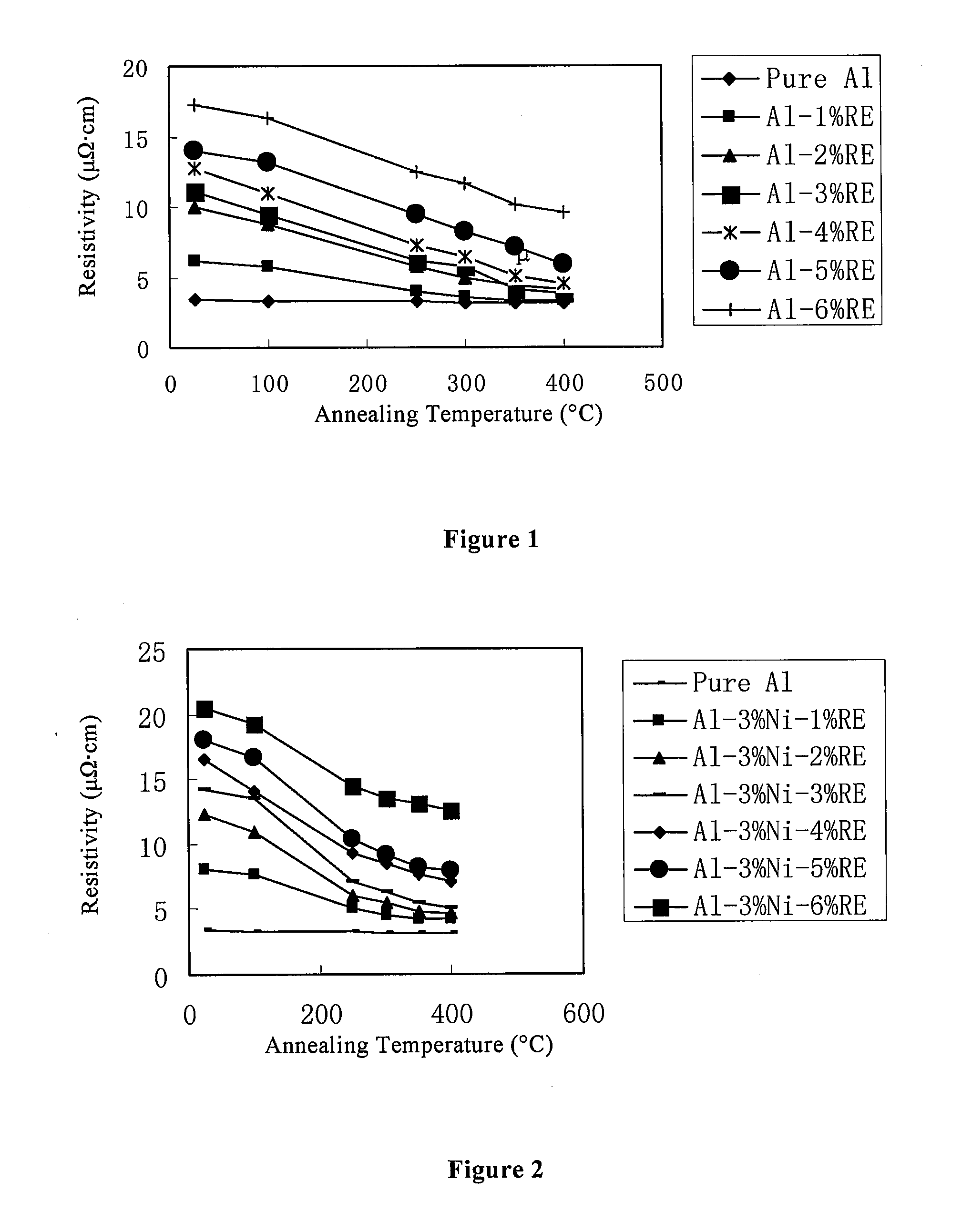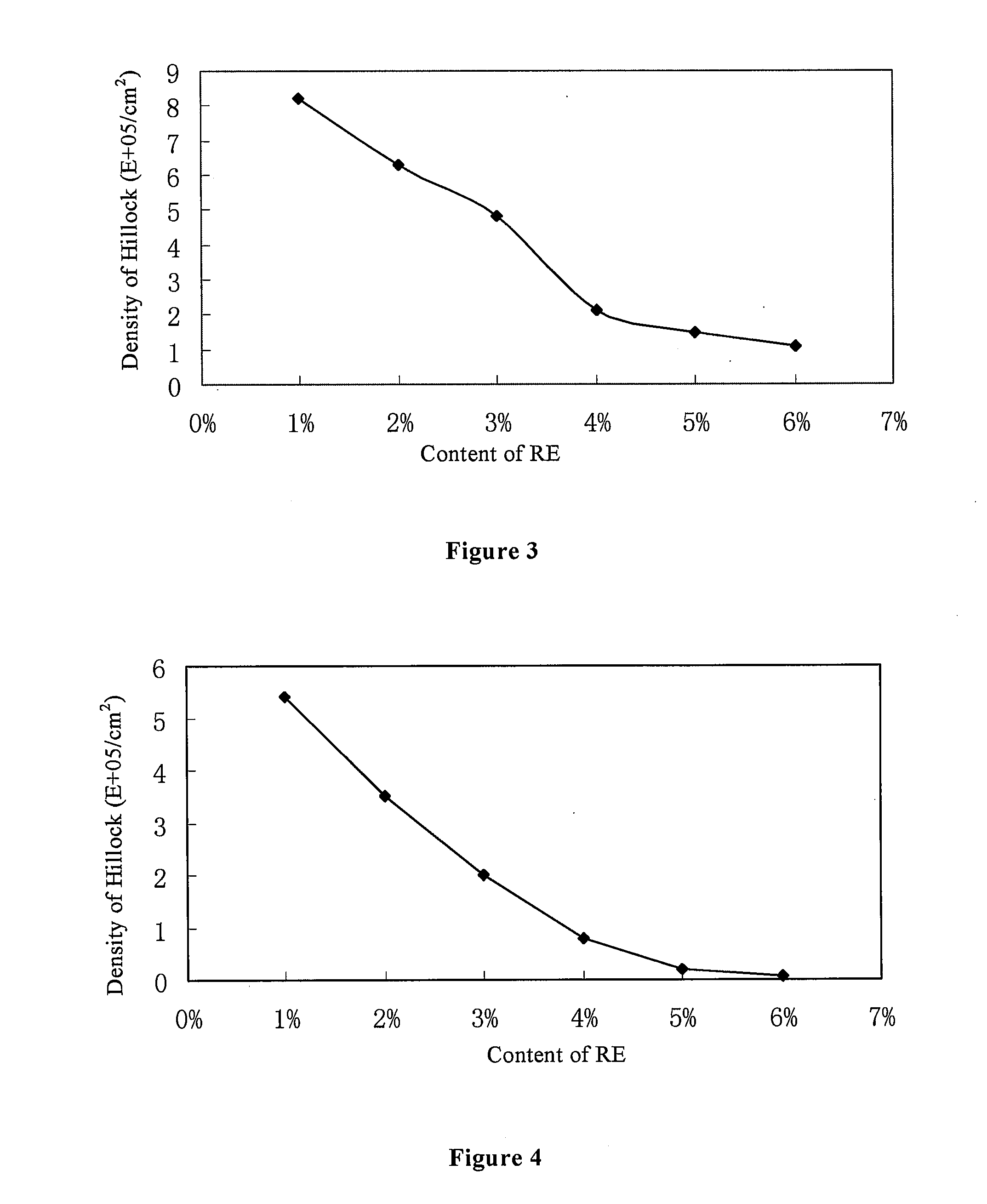Target material for electrode film, methods of manufacturing the target material and electrode film
- Summary
- Abstract
- Description
- Claims
- Application Information
AI Technical Summary
Benefits of technology
Problems solved by technology
Method used
Image
Examples
embodiment 1
[0039]Powders of Al, Ni and RE with a purity of 99.99 wt % are sufficiently mixed, and then heated by an induction furnace or a resistance furnace. After the material is completely molten, the molten alloy is atomized into droplets by ejecting working gas (typically Ar or N2 gas) with an atomizing nozzle, and is brought by a flow of the working gas to move quickly toward a cold substrate that is rotating at a certain speed, so as to form a blank of a certain density (typically about 95% of the theoretical density) on a surface of the substrate. The blank is preliminarily reshaped, thermal isostatic pressing densitified, and then formed into a final dimension for a target material through forging and machining.
embodiment 2
[0040]Powders of Al, Ni and RE, which are sufficiently mixed, are heated by an induction furnace or a resistance furnace. After the material is totally molten, the liquid state alloy is blended uniformly and then poured into a mold cavity (e.g., a metallic mold or sand mold) preheated to a certain temperature, and left to be cooled to the room temperature. Then the solidified alloy is taken out of the mold cavity and machined into the final dimension for a target material with or without forging.
embodiment 3
[0041]On a glass plate with a thickness of 0.5 mm, an Al alloy film is deposited to a thickness of about 400 nm by DC magnetron sputtering a target material of Al-RE or Al—Ni-RE alloy. The content of the alloying element(s) except Al in the target material is controlled to be about 1 at %-6 at % during manufacturing the target material. The resulting film is cooled to the room temperature after it is annealed at a temperature of 100° C., 200° C., 300° C. or 400° C., and measurement of the resistivity is performed on the films annealed at the different temperatures by using a four-point method. The hillock density of the resulting film is also measured. The content of every component of the film is measured by using Inductive Couple Plasma (ICP) method. The test results are shown in FIGS. 1 to 4.
[0042]FIG. 1 illustrates variation of resistivity of the alloy film with respect to different annealing temperatures, for different contents of RE in an Al-RE alloy. With an annealing duratio...
PUM
| Property | Measurement | Unit |
|---|---|---|
| Temperature | aaaaa | aaaaa |
| Dimension | aaaaa | aaaaa |
| Refractory | aaaaa | aaaaa |
Abstract
Description
Claims
Application Information
 Login to View More
Login to View More - R&D
- Intellectual Property
- Life Sciences
- Materials
- Tech Scout
- Unparalleled Data Quality
- Higher Quality Content
- 60% Fewer Hallucinations
Browse by: Latest US Patents, China's latest patents, Technical Efficacy Thesaurus, Application Domain, Technology Topic, Popular Technical Reports.
© 2025 PatSnap. All rights reserved.Legal|Privacy policy|Modern Slavery Act Transparency Statement|Sitemap|About US| Contact US: help@patsnap.com


